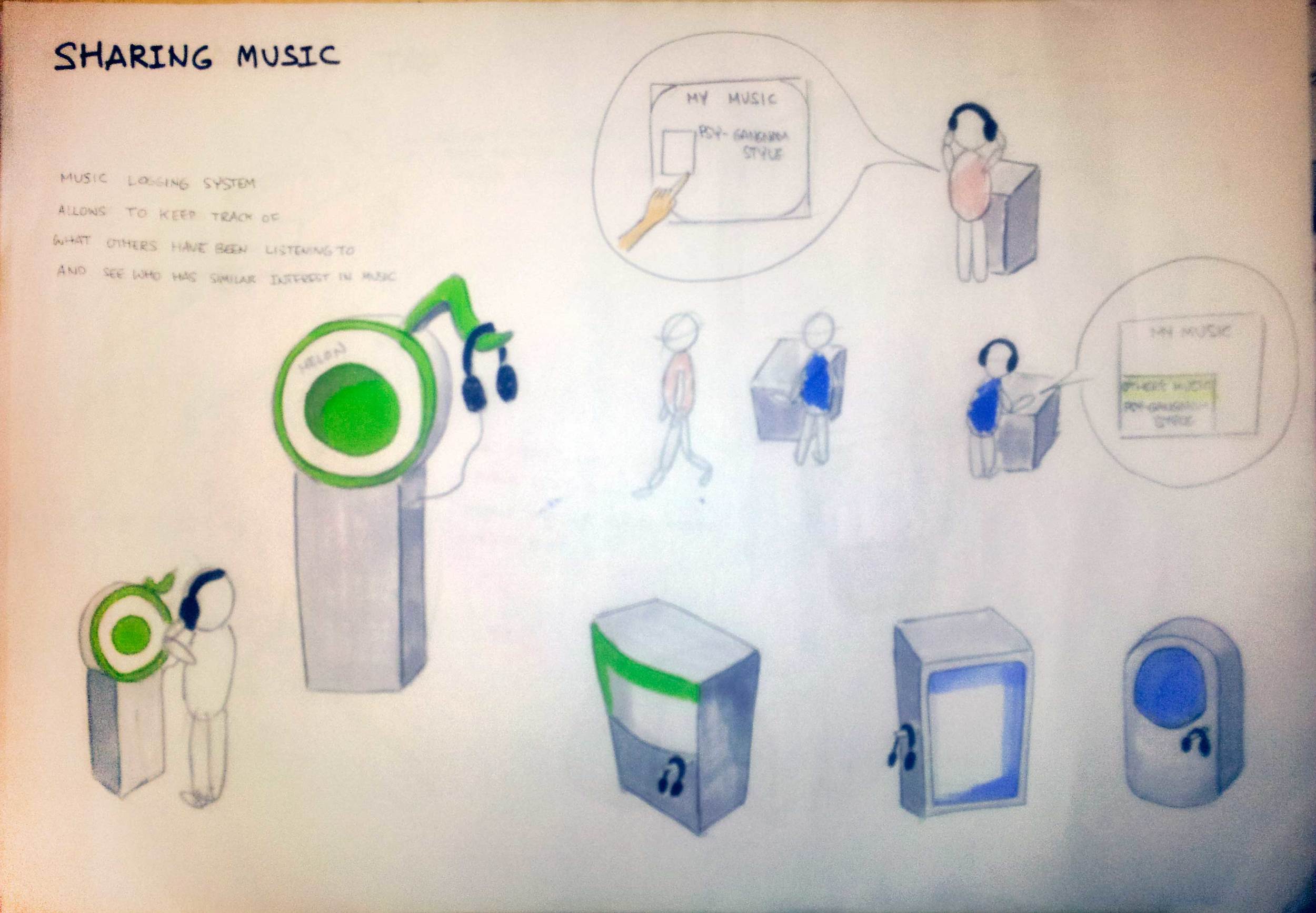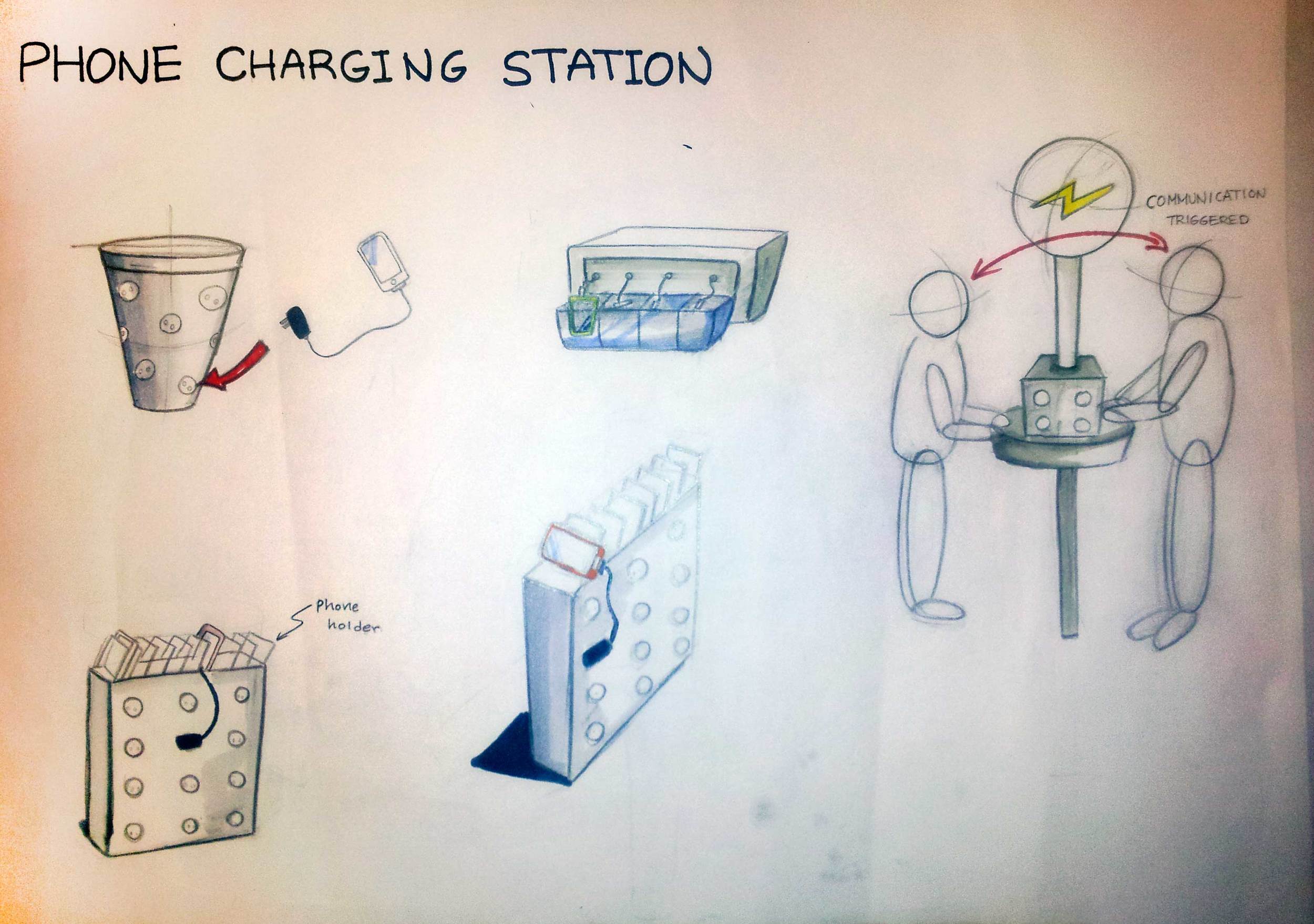ROLE
Designer | Research & Design & Prototype
Overview
B-Side is a product that promotes spontaneous interactions between the KAIST students to make friendlier campus. B-Side is a jukebox that receives song requests from the users who must bring a new friend and write down the song request together on cassette tape labels. With B-Side, music becomes the medium to spark interactions between the new friends.
B-Side Experience
Design Brief
Since KAIST has a small student body of approximately 4,000 undergraduates, most of the KAIST students are acquainted. It is not unusual to face a situation at KAIST where one hesitates to say hello to another who he knows but not really 'knows'. While KAIST students have desire to make new friends, most of them are afraid of the awkward atmosphere when meeting new people. We want to design a product that can stimulate and encourage spontaneous interactions between the KAIST students, and thus create a friendlier environment.
Secondary Research
(1) Public and open places trigger social interaction
"The assumption of mutual regard and good will build into open regions guarantees a rationale for discounting the potential nefariousness of contact among the unacquainted, this being one basis for sociable accessibility."
- From the book "Behavior in Public Places" by Erving Goffman
(2) People like to turn everyday objects into something special
With a normal dollar bill stamped with a "Where’s George?" stamp, people are encouraged to log where they got the bill, and are able to see where the bill has been.
(3) Music is an efficient medium to bring people together
"I wanted Howl at The Moon to be open and spacious to allow for communication and sharing of ideas between everyone who visits our bar."
- From an interview with Tae-Lim Kim, the owner of a music bar "Howl at The Moon" around KAIST that accepts song requests
Primary Research
- Disposable camera study
- 3 participants each took at least 10 photos related to social interaction
- Follow-up interviews
INSIGHTS
- People are ready to spontaneously make new friends in unexpected situations.
- Spontaneous interaction is useful for interaction between strangers.
- People gather for the common things they share and get closer by sharing that same interest.
"Sometimes random people walk up and ask to take a picture of them. It is a fun way to spark spontaneous interaction." - From an interview with a participant
Photos from Disposable Camera Study
Concept Development
We sketched ideas and came up with user scenarios. Among them, we chose a music station where the users can request songs with others at a cafe or a lounge on campus.
EXPERIENCE PROTOTYPING
Experience Prototyping Setting
- Time & Location : 9pm - 12am at KAI Lounge (student resting area)
- Number of Participants : Approximately 40 students
- 35 pairs of song requests
- 25 follow-up interviews
The participants were asked to come to KAI Lounge to take a rest. They were not informed about the experience prototyping. In the middle of the lounge, we set up our product, a music station, where one of us was hiding inside to receive song requests and play music. The instructions to request a song was provided on the station wall. To request a song, user had to bring another person with him to the station and each one of them had to write down the title and the artist name of the song on post-it notes. We observed people's reaction when they read the instruction, their interaction with other people, and the effect of the interaction. There were some people who did not interact with the other person after requesting the song or did not use the product at all. However, no one declined to help pick a song or bring a new person when they were asked by the product. From experience prototyping, we learned that music, analog features of the product, and missions can engage people
"I was surprised when I was asked to bring a new person to request a song. But I thought it would be fun."
"This gave me a chance to talk to someone I wanted to meet."
"I'm going to say hi to the person I met today, if I run into him on campus."
"I think music is considered as a universal language and being able to talk about and share music is a beautiful thing."
-Quotes from the interviews
Final Design
USER SCENARIO
DESIGN FEATURES
Use of Analog Cassette Tape
B-Side uses a cassette tape as its medium to request a song. This brings analog atmosphere and clearly delivers the concept of "music". Cassette tape has two sides: A-side and B-side. Users write the title and artist of the song on the labels and stick them on both sides of the cassette tape.
OCR Technology to Read Handwriting
A scanner placed behind the tape slot reads the handwriting and converts it into the digital text via OCR reading technology.
Product Form
B-Side has a speaker grill on its surface to give a hint to the users. The product design detail allows users to instantly know that the product is a music player and music is expected to be played.
DESIGN VALUES
User Values
B-Side helps users to approach new people by giving them a reason to go up to and talk to someone new. Also it allows users to listen and share their music.
Social Values
B-Side creates a livelier and more vibrant school campus and a friendlier atmosphere at KAIST. It also revives the old school method of playing music.
Interface Design
B-Side interface uses black and white color only to arouse analog feeling.















